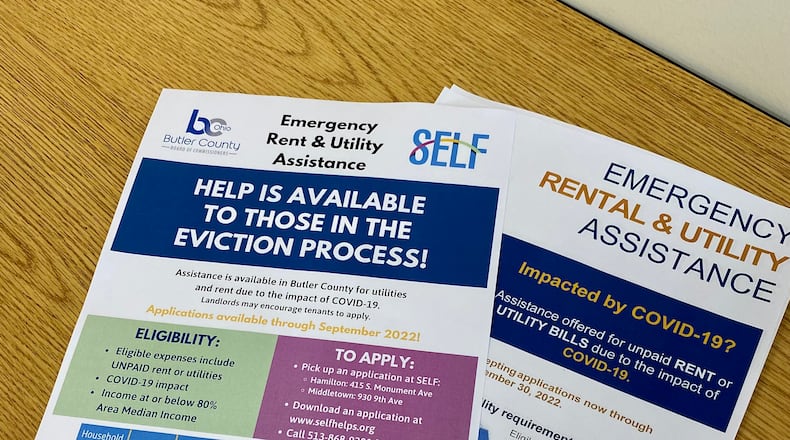The Journal-News obtained emails the Treasury sent to the county’s development department that show the county was promised a $4 million allotment — $5.4 million was the remaining balance until Treasury clawed some back —would be forthcoming on Sept. 30, but five days later the amount had been halved, with no explanation. They sent $2 million on Oct. 27.
“They did release $2 million to us and we’re still appealing to get all that money back, we have our fingers crossed that that will still come our way. They are only allocating tranches of the money at a time,” Development Department Director David Fehr said adding they weren’t given a reason the allocation was halved, “I don’t think we got a specific answer from the Treasury and they are not taking phone calls any longer.”
The deputy secretary of the Treasury sent a letter Sept. 23 announcing that due to budget constraints in handling the various pandemic relief funds, effective Oct. 1 they were closing their call center and “sharply curtailing our email response operations, limiting our ability to respond to most questions that arrive in the inbox.”
In response to the coronavirus pandemic, federal lawmakers approved two emergency rental assistance programs, the first bucket of up to $25 billion was established under the Consolidated Appropriations Act of 2021, which was enacted in December 2020. Another $21.5 billion was approved under the American Rescue Plan Act which was enacted in March 2021.
The county was supposed to get the remaining $5.4 million but $1.4 million was clawed back because Treasury wanted the county to expend 20% — or $1.8 million — of the $9.1 million tranche by March 31, but the guidance from Treasury that included the deadline and other rules, was issued the day before the deadline.
The commissioners were allocated the second round of funding in June 2021 but the commissioners chose not to collect it until the end of January because they wanted they wanted to gauge the need first.
Had the county accessed the funds earlier the deadline would not have been an issue because the need has been great. The commissioners contracted with Supports to to Encourage Low-income Families (SELF) to manage the program and Executive Director Jeffrey Diver told the Journal-News they have awarded $15 million to 2,436 needy households with the commissioners’ federal funds and $7.4 million to 2,279 families with other grant money they have received.
SELF had to pause the program in August, first because they were dealing with a backlog of about 350 applications and then because the money from the federal government had run out. The Treasury only sent 40% of the $9 million allocation, Susan Ellerhorst, the county’s community development administrator had been calling Treasury weekly since the beginning of August looking for the second installment. The final deadline is Sept. 30, 2025.
Commissioner Don Dixon said it is frustrating, but he is not surprised the issues have arisen with the federal funding.
“It’s government, what can you say,” Dixon said. “Whenever you hear them say I’m from the government and I’m here to help, you know you’re in trouble.”
Diver told the Journal-News they reopened the program two weeks ago — SELF has been allocated an additional $1.6 million from the state — and have received 300 applications.
There are restrictions on the money, such as that recipients must be able to demonstrate their inability to pay their rent is due to COVID-19. Eligible renters must make below 80% of the area median income, or about $45,000 for a family of two.
Dixon said he knew the assistance was crucial at first but is trying to understand — given that society for the most part has gotten back to normal — why exactly the need is persisting.
“I didn’t think it would continue to be as long as it has been,” Dixon said. “I’m not understanding, there’s so many parts that make that happen, the need and why, was this because they got COVID and they quit their job, is this because of COVID and they lost their job or is this because they just didn’t want to work and this kind of helps out, with plenty of money all the way around.”
Diver said people are still qualifying for help because they or their family members are still catching the virus and the pandemic is still having an impact on their lives in other ways.
“I think many of the families were struggling prior to the pandemic and the pandemic pushed them over the edge,” Diver said. “Even a small reduction in hours or missing work for s few days when you don’t have sick leave, you know now it makes it near impossible for me to pay my bills.”
About the Author

